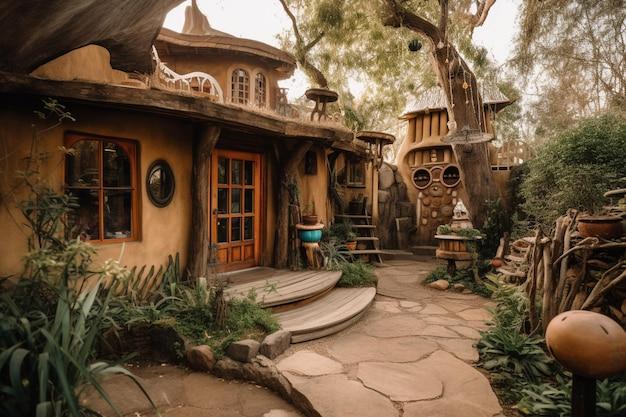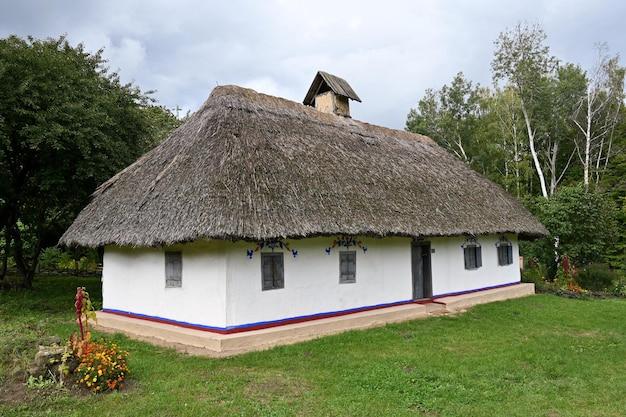If you’re looking for a unique and sustainable housing option, you might have come across cob houses. These natural homes have gained popularity over the years due to their eco-friendly properties and charming aesthetics. But how long can you expect a cob house to last? In this blog post, we’ll explore the durability of cob houses, the factors that can affect their lifespan, and answer some common questions about cob construction.
Cob houses, made from a mixture of sand, clay, and straw, have been around for centuries. In fact, some cob houses in Europe can date back hundreds of years. While durability can vary depending on maintenance and environmental factors, a well-built and properly maintained cob house can last for several generations.
Join us as we delve into the lifespan of cob houses and address common concerns regarding planning permission, energy efficiency, plumbing, mortgageability, and the effects of moisture. Plus, we’ll give you an idea of the cost of building a cob house and whether insulation is needed. Let’s get started on this fascinating journey into the world of cob homes!
How Long Does a Cob House Last
If you’ve ever dreamed of living in a cob house, you may be wondering just how long these earthy dwellings can stand the test of time. After all, building a house out of a mixture of sand, clay, and straw sounds intriguingly rustic, but does it have the durability to match? Let’s dig deep into the subject and find out!
The Timeless Strength of Cob
Cob houses have been around for centuries, with some dating back to as early as the 11th century. This ancient building technique has proven its resilience throughout the years, standing strong in various climates and regions around the world. So, how long can you expect a cob house to last in today’s modern age?
A Long Lifespan Worth Celebrating
When properly built and well-maintained, a cob house can last for several lifetimes. While it’s hard to pinpoint an exact number of years, some historical cob houses have endured for over 500 years! Imagine passing down your cob home to your great-great-great-great-grandchildren. They’d certainly have a unique piece of family history to proudly call their own.
It’s All in the Ingredients
Several factors contribute to the longevity of a cob house. The quality of the building materials, including the clay, sand, and straw, is crucial in ensuring its structural integrity. Properly mixed cob that has been allowed to cure thoroughly will result in a strong and durable structure that can withstand the test of time.
Weathering the Elements
One of the impressive qualities of cob is its ability to regulate moisture. The thick walls of a cob house create a natural buffer against the elements, keeping the interior cool in the summer and warm in the winter. This inherent insulation helps protect the cob from the harmful effects of excessive moisture, preventing erosion and decay.
Maintenance Matters
While cob houses are durable, they do require regular upkeep to maximize their lifespan. Maintenance tasks such as repairing any cracks or applying protective coatings can help keep the cob walls in great condition. Additionally, ensuring proper drainage around the foundation and periodic roof inspections will go a long way in preserving the structure.
The Future Looks Cob-tastic
As society embraces more sustainable and eco-friendly building practices, cob houses are experiencing a resurgence in popularity. People are drawn to their unique charm and the undeniable connection to nature that cob homes provide. With the right knowledge and care, it’s safe to say that cob houses will continue to stand proudly for generations to come.
So, don’t let the unconventional nature of cob housing deter you from considering its longevity. A well-built cob house can last for centuries, offering a timeless haven for generations to enjoy. Embrace the beauty of natural building techniques and create a home that truly stands the test of time. After all, a cob house is more than just a dwelling; it’s a piece of history in the making.
FAQ: How Long Does a Cob House Last
Frequently Asked Questions About the Durability of Cob Houses
Are you curious about the longevity of cob houses? How do they fare against the test of time? In this comprehensive FAQ-style subsection, we’ll address some of the most common questions regarding the durability and lifespan of cob houses.
Do You Need Planning Permission for a Cob House
Building regulations may vary depending on your location and local authorities. While some jurisdictions may require planning permission for cob houses, others may have more relaxed restrictions for alternative building methods. It’s essential to check with your local building department to understand their specific requirements.
Are Cob Houses Energy Efficient
Absolutely! Cob houses are known for their excellent thermal mass properties, which help regulate indoor temperatures naturally. The thick cob walls retain heat during colder months and keep the interior cool during hot summers. This natural insulation reduces the need for excessive heating or cooling, ultimately making cob houses energy-efficient.
Can You Have Plumbing in a Cob House
Certainly! Cob houses can accommodate plumbing systems just like any conventional house. With proper planning and expertise, you can install water supply lines and drainage systems to ensure modern conveniences within your cob home.
Are Cob Houses Mortgageable
Yes, cob houses can be eligible for mortgages, especially when they comply with local building codes and regulations. Some lenders may have specific policies regarding alternative construction methods, so it’s advisable to consult with mortgage providers who are open to financing cob houses in your area.
Is Cob Building Cheap
Compared to traditional construction methods, cob building often comes with lower costs. The materials used in cob construction, such as clay, sand, and straw, are generally abundant and inexpensive. Additionally, the simplicity of building techniques and the option to incorporate sustainable solutions can contribute to cost savings in the long run.
Are Cob Homes Durable
Absolutely! Cob is an incredibly durable material that has been used for centuries. When properly maintained, cob houses can stand the test of time, lasting for several generations. The thick walls, composed of clay, sand, and straw, provide structural stability and resilience.
What Happens if Cob Gets Wet
Cob houses are designed to withstand normal rain and moisture levels. However, excessive or prolonged exposure to water can compromise the integrity of the walls. It’s essential to ensure proper drainage and protective features like overhangs and appropriate exterior finishes to prevent water damage.
What Is the Ideal Thickness for Cob Walls
The recommended thickness for cob walls is typically around 24 inches or more. This thickness enhances the structural stability and thermal mass properties of the walls, providing a comfortable living environment with superior insulation.
What Happens to a Cob House When It Rains
Cob houses are inherently resistant to rain, but the walls may absorb some moisture. However, this does not cause significant damage when the house is appropriately protected with a solid roof overhang, good drainage systems, and adequate ventilation. With proper maintenance, cob houses can endure rainy seasons without any adverse effects.
Can I Pay Someone to Build a Cob House
Absolutely! If you’re not inclined to build a cob house yourself, you can hire professionals experienced in cob construction. It’s crucial to find skilled builders who understand the specific techniques and requirements of working with cob to ensure a quality and long-lasting result.
Can You Get a Mortgage on a Cob Cottage
Yes, it is possible to obtain a mortgage for a cob cottage, subject to the lending policies of the particular financial institution involved. As cob cottages gain recognition as viable housing options, more lenders are becoming open to financing these unique dwellings. Be sure to inquire about mortgage options specifically tailored for alternative construction methods.
Can Cob Houses Be Built in Cold Climates
Cob houses can certainly be built in cold climates, provided that suitable design considerations and insulation techniques are employed. Incorporating thick cob walls, insulating materials, and efficient heating systems can help maintain comfortable indoor temperatures in colder regions.
Why Are Cob Houses So Affordable
Cob houses are often more affordable due to the low-cost and abundant availability of the raw materials used in construction. Additionally, the simple building techniques and the potential for incorporating sustainable practices contribute to cost savings, making cob houses an economical choice for many.
Do Cob Walls Require Additional Insulation
Cob walls, with their natural thermal mass properties, already offer excellent insulation. However, in colder climates or regions with extreme temperature variations, additional insulation can help optimize energy efficiency. It’s recommended to consult with professionals who specialize in cob construction to determine the insulation requirements suitable for your specific location.
Do Cob Houses Burn
While cob is generally fire-resistant, it is not entirely fireproof. Cob walls are thick and composed of non-combustible materials, but the presence of flammable elements within the house, like furniture or wood accents, can still pose a fire risk. It’s essential to adhere to fire safety precautions, install proper smoke detectors, and maintain a safe environment within your cob home.
Does Cob Wash Away
Cob is a highly durable material and does not wash away easily. However, improper construction practices, insufficient roof overhangs, or inadequate drainage systems can lead to water damage and erosion over time. With proper design, maintenance, and protective measures, cob houses can withstand the elements without washing away.
How Much Does a Cob House Cost
The cost of a cob house can vary depending on various factors, such as size, location, design complexity, and local labor rates. On average, cob houses tend to be more affordable compared to conventional houses. While costs can fluctuate, building a simple and functional cob house may range from $100 to $150 per square foot, excluding land and permits.
Do Cob Houses Need Insulation
Cob houses already possess natural insulation properties due to the thickness and composition of their walls. However, in extreme climates or regions with significant temperature fluctuations, additional insulation may be necessary. Consulting with cob construction experts will help determine the right insulation strategy based on your unique circumstances.
Now that we’ve tackled these frequently asked questions about the longevity and durability of cob houses, you can confidently consider this sustainable and unique construction method for your future dwelling.

